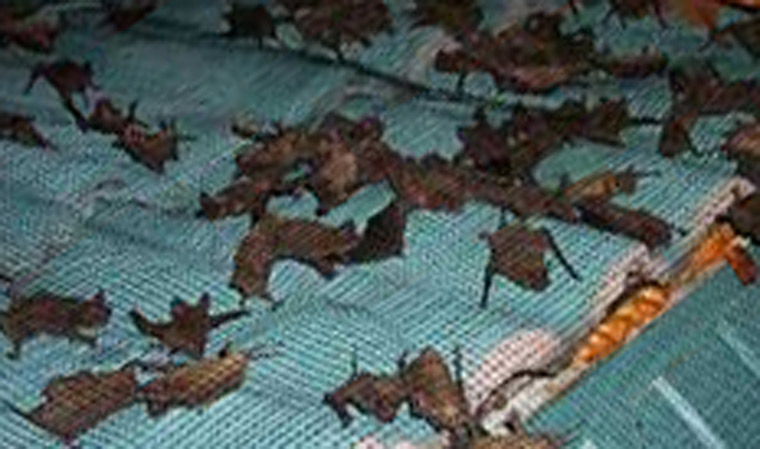-
info@aaanimalcontrol.com
Call us for help in your town
Humane Wildlife Education
Do Bats Migrate or Hibernate During the Winter
Need bat removal in your hometown? We service over 500 USA locations! Click here to hire us in your town and check prices - updated for year 2020.
Some bats do migrate. Some bats hibernate. Different bats will do different things, and their behavior will depend on where they live too. If the bat has a roost in a place where it is relatively warm all year round, and there is plenty of food on offer too, it will stay right where it is, without the need to move somewhere else.

The little brown bat is one species of bat you are commonly going to encounter in the US, and these are bats that are known to both hibernate and migrate. Some of them will “sleep” away the colder winter months, but it is believed that many more of them would much prefer to move somewhere nice, hot and sunny for the winter.
There are a number of other bats that migrate, and the lesser long-nose bat is just one of them. During the winter, when the weather is colder, the bats prefer the warmer temperatures of Mexico, setting up migratory roosts in caves. When the weather gets hotter, however, they move again, generally to the South-Western areas of the USA. Another bat that moves to Mexico when it gets cold is the Mexican free-tailed bats, and in the summer, New Mexico is their habitat of choice. Hoary bats are another species that travel South to spend the winter, and this is all because they would struggle to find food and appropriate shelter to keep them alive if they were to stay put.
They move around like this to give themselves the best chance of survival. Not just the adults among them, but the youngsters too. The warmer, summer locations offer the best spots to raise a family, and the best food too. But if they were to stay there all year round, without either a migration or hibernation to fall back on, the majority of the colony would die. There wouldn’t be enough food to support them all if they were to stay the way they were. The cold temperatures would cripple them, and it would make finding fresh, non-frozen water really difficult also.
We don’t know lots of information about migrating bats. We’re not sure where all of the different species go for the colder months, but they are being monitored. If we find out where these bat haunts are, we can take active measures to protect them. In many circumstances the bats are homeless because of the actions that we humans have taken. We have cut down the places that they would have once called home, and converted caves into tourist attractions or something else. Some bats are protected now because of dwindling numbers, and some species are now classed as endangered. There are 77 different species on the Endangered and Critically Endangered bats on the IUCN Red List of Threatened Species. The Florida Bonneted Bat is now classed as endangered, for example, and there are threats to bats in the form of disease also. White-nose syndrome has affected Canada’s population of Northern Myotis bat, also know as the Northern long-eared bat, tricolored bat, and little brown myotis, also known as the little brown bat. You can also add the following bats to the endangered list: Hawaiian hoary bat, Indiana bat, Ozark big-eared bat, Virginia big-eared bat, and the Mexican long-nosed bat.
We need to do the right thing by these bats, ensuring they are taken care of and not driven to extinction. If you have spotted bats flying around your home, call in the professionals. We can boast of being able to remove an entire bat colony from attics and other places within both residential and commercial properties, and we don’t injure a single one of them! (Yes, we’re THAT good!)
For more information, you may want to click on one of these guides that I wrote:
How much does bat removal cost? - get the lowdown on prices.
How to get rid of bats - my main bat removal info guide.
Example bat removal photographs - get do-it-yourself ideas.
Bat job blog - learn from great examples of bat jobs I've done.
how to get bats out of your attic


















